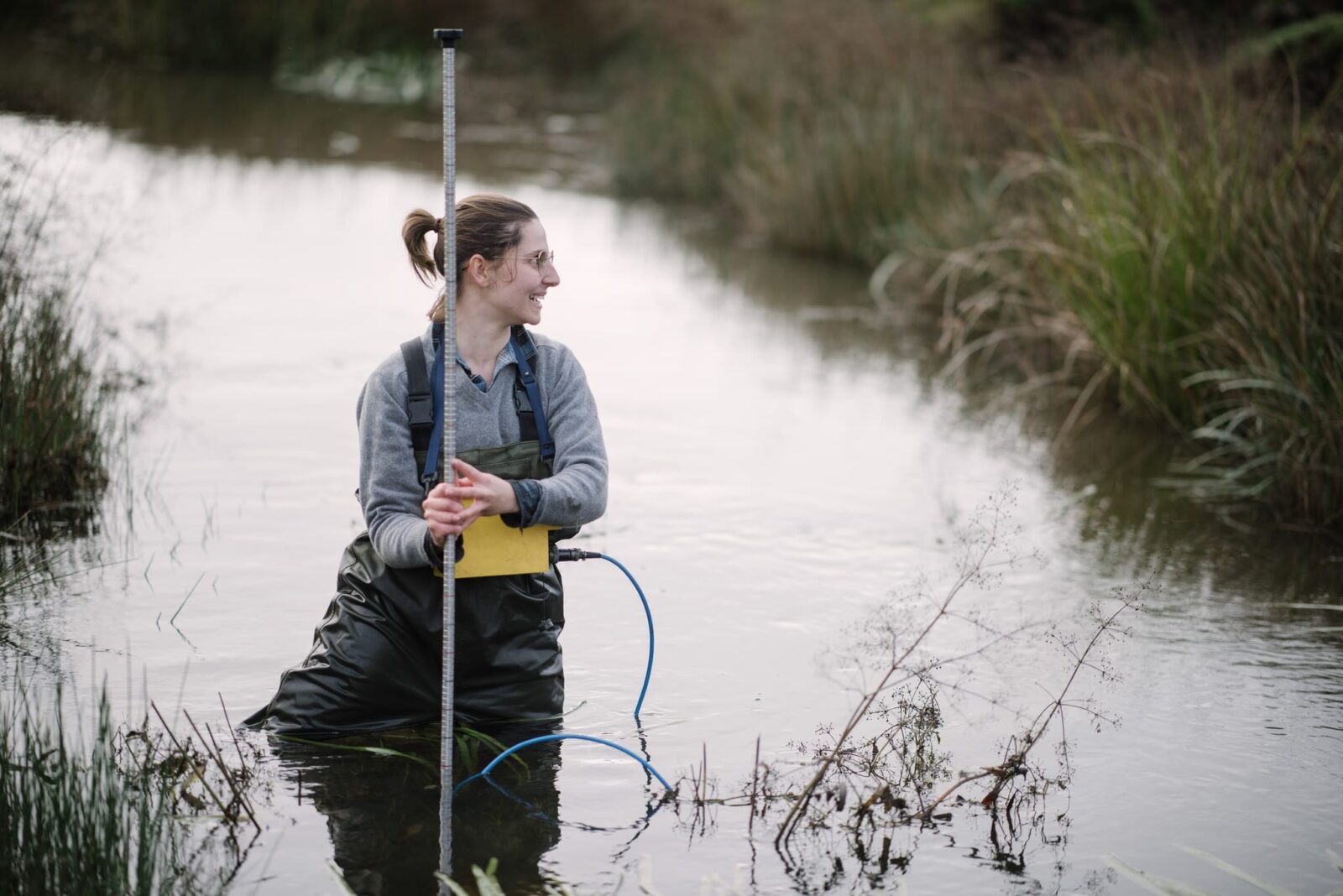Real time tracking of on-farm fatalities and injuries across Australia now available

 NATIONAL CHALLENGES AND OPPORTUNITIES / Thursday, 14 September 2023
NATIONAL CHALLENGES AND OPPORTUNITIES / Thursday, 14 September 2023 
A MIX of algae scooped out of a Victorian waterway and a species of amphibious grass plucked from a stream have both been found to reduce methane production by up to 24 per cent, in world-first research by a team led by Deakin University’s Centre for Regional and Rural Futures and funded by AgriFutures Australia.
Methane from the digestive process of ruminant livestock such as cattle, sheep, and goats accounts for the majority of Australia’s agricultural emissions.
Aquatic ecologist Dr Rebecca Lester said the project was prompted by a landholder who asked about ways to limit their on-farm emissions having heard about the success of the red seaweed Asparagopsis taxiformis, a macroalgae which can reduce methane emissions in cattle by more than 90 per cent.
“Asparagopsis is amazingly effective and has a lot of potential,” said Dr Lester.
“But it also has challenges, such as the issues surrounding growing something offshore in really high energy coastlines like ours, the amount you need to grow to make it a viable and scalable source of feed for livestock, and its susceptibility to disease.
“The other major challenge is its efficacy degrades through time. If you don’t get it into cattle within some number of months, the impact that it has declines because the active ingredient is not a stable one in the long term.”
Dr Lester and a team that included chemists and biochemists, assisted by the expertise in measuring methane emissions at University of Western Australia, set about finding if there were freshwater alternatives, and started by collecting samples from waterways in Victoria’s Barwon River catchment.
“As far as I know no one has tried this,” said Dr Lester.
“We know a lot more about marine algae and black tea has been effective in reducing methane in sheep. With this, we started with “Let’s just see what happens” and intended it to be a proof of concept.
“We were looking for species that were already widespread, native and not likely to be toxic or become environmental weeds – we don’t want to create more problems than we solve.”
The team collected two different samples, a natural mix of algae, as it does not grow in a monoculture in the wild, and the amphibious grass Montia australasica.
When fermented by rumen microbes in vitro, testing showed the algal mix reduced methane production by 24 per cent at a 20 per cent dose, and Montia australasica reduced methane production by 21 per cent, at a 50 per cent dose.
“This opens the door to saying well maybe we can optimise how we grow them,” said Dr Lester.
“We just collected that little Montia plant from the side of a stream. If you grew it under particular conditions, then you might have a much bigger impact.”
“We now have multiple species that have potential to be used as a feed additive to reduce methane production in livestock and are likely to be suitable for individual farmers to grow and feed, reducing the complexities of supply associated with marine alternatives.
“There’s lots of other benefits associated with water quality, erosion control and reduction of nutrients going into waterways.
The next step would be to seek funding to assess whether Montia australasica is a safe feed for cattle, research that could take as little as six to 12 months.
“It could be something in practice in the next couple of years,” said Dr Lester.
“The pathway for algae is probably a bit longer, partly because we have to determine exactly what it is and partly because of those issues around it needing to be grown under more controlled conditions so that you’ve maintained the monoculture. So that one probably would be more like a five-year pathway.
“We just want to create options for farmers and add to the range of ways that people can potentially reduce their emissions. So, they might be able to plant this plant in their dam and then go through and harvest it and feed it to their cattle and they avoid another input cost if they were purchasing a product like asparagopsis.”
Click to download the report here.
Click to review all the Carbon Initiative Program findings here.
Media enquiries:
Matt Wordsworth
0404 029 241
 NATIONAL CHALLENGES AND OPPORTUNITIES / 14.09.23
NATIONAL CHALLENGES AND OPPORTUNITIES / 14.09.23  WORKFORCE AND LEADERSHIP / 14.09.23
WORKFORCE AND LEADERSHIP / 14.09.23  WORKFORCE AND LEADERSHIP / 14.09.23
WORKFORCE AND LEADERSHIP / 14.09.23  WORKFORCE AND LEADERSHIP / 14.09.23
WORKFORCE AND LEADERSHIP / 14.09.23